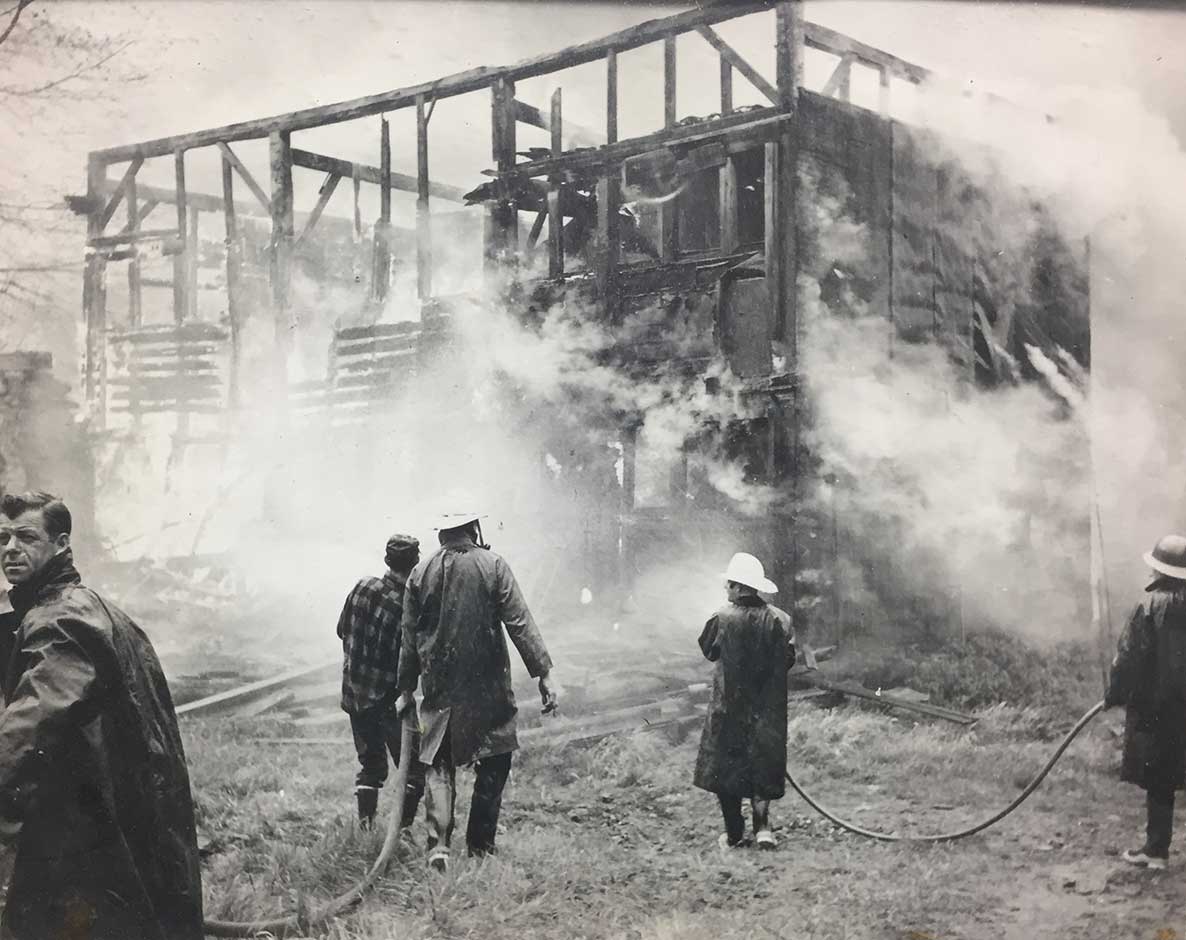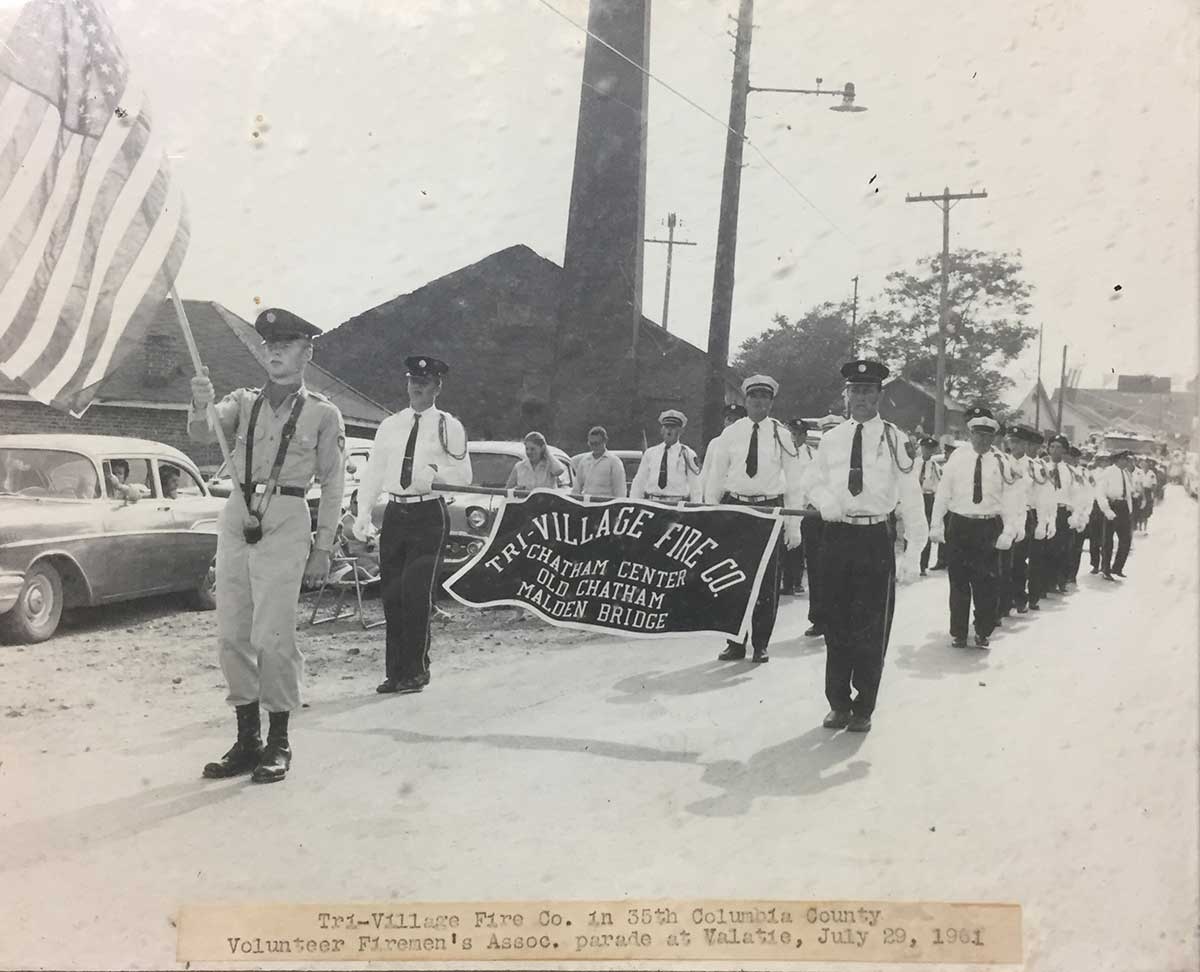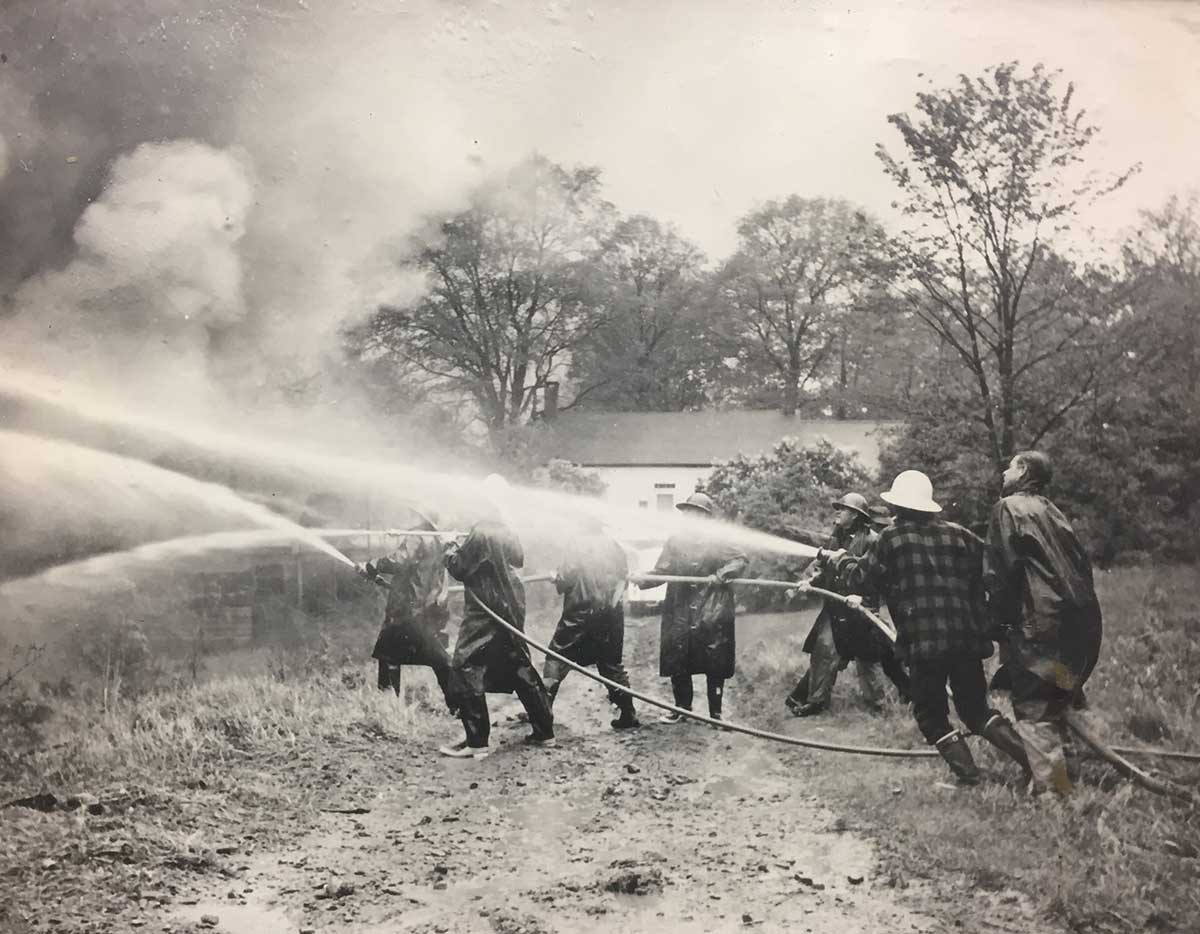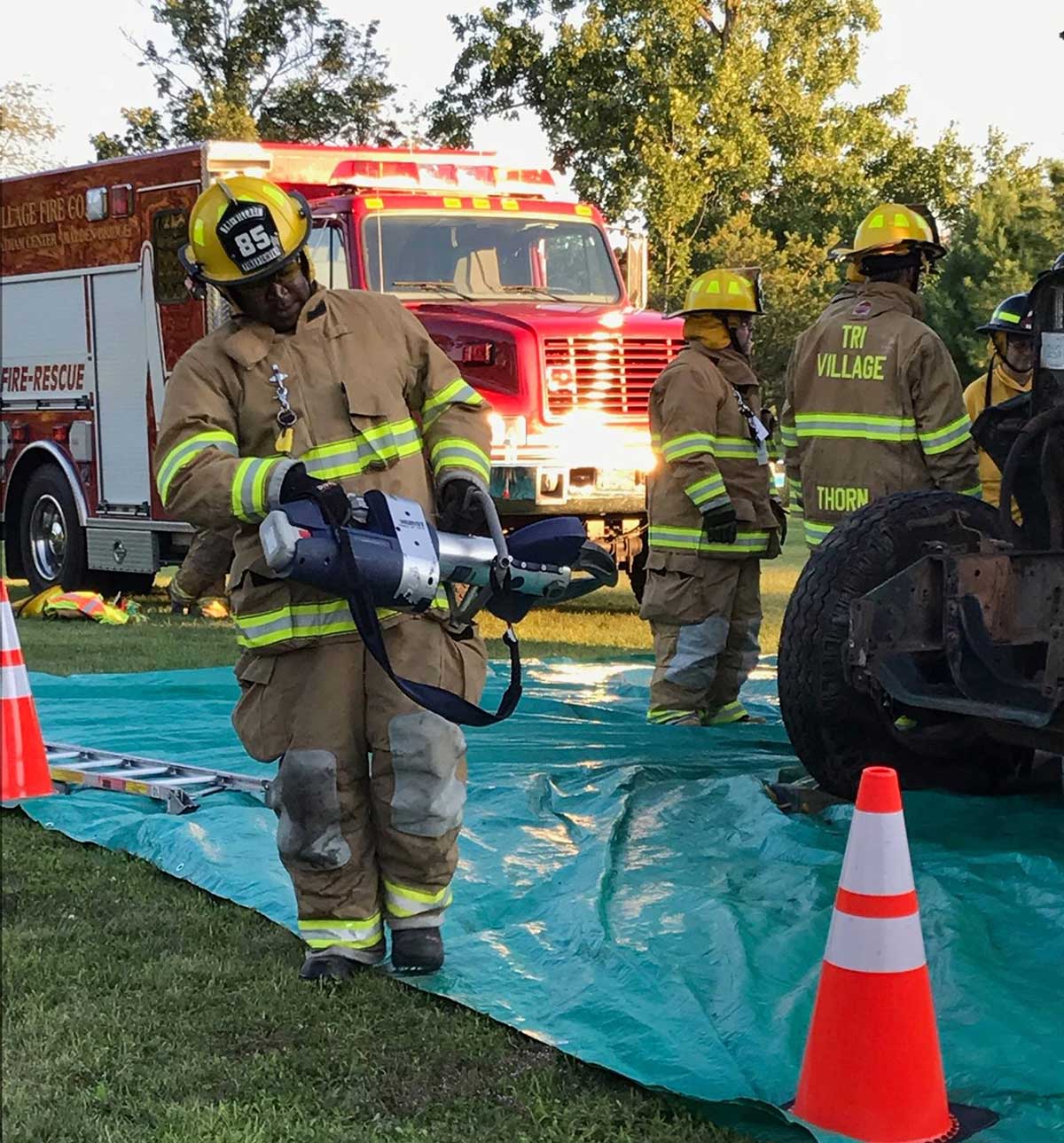History of Tri-Village Fire Company

The Tri-Vilage Volunteer Fire Company has served the needs of the communities of Old Chatham, Chatham Center and Malden Bridge for over 70 years.
Fire had always been an implacable menace since the time of early settlement, and for centuries bucket brigades manned by neighbors were the only method available to fight fires. Servicemen fighting in World War II had been trained in modern firefighting techniques, and upon their return from the war, there was wide-spread feeling that more effective approaches could be employed to fight fires in our rural district.
In August 1946, over 100 men attended an organizational meeting and officially established the Tri-Village Fire Company. This was a remarkable commitment on the part of a community that had approximately 330 households. While women were excluded from membership in the Company in its early years, they now serve in the Fire Company as firefighters, EMTs, etc. and serve in leadership positions.
No time was lost in raising funds to outfit the operation. In a time before home entertainment centers and satellites, the Fire Company fundraising activities served as the focus of community social life. There were regular dances, clam bakes, chicken barbecues, steak roasts, theatrical performances, carnivals, minstrel shows, fashion shows, and parades. These efforts required a lot of time, attention, and energy, but they were very popular and people came from far and wide. One minstrel show, held at the Playhouse in Malden Bridge, attracted over 500 people. Raffles at events attracted people for such prizes as a Duroc pig, steers, refrigerators, cars, farming implements, and useful household items. The Company’s annual steak roast still attracts many hundreds of people each September.
Women were very involved in Fire Company fundraising activities from the beginning, and an Auxiliary was created to support the efforts of the Fire Company.
By May of 1947 the company was able to purchase from the War Assets Administration its first fire engine–a 1941 Chevrolet with a 300 gallon capacity and 1,500 feet of hose. Within a year, two additional engines were acquired: a 1922 Seagrave and a 1916 chain-driven LaFrance. In the beginning, the engines were housed in private garages while the members arranged for more appropriate housing.
Local land owners donated parcels of land in Malden Bridge and Old Chatham and the company purchased a small parcel in Chatham Center for fire houses. The first to be built was the Malden Bridge Station, and it was built entirely by the firefighters themselves. Next was the Chatham Center Station, and finally, construction of the Old Chatham Station began in 1953–the first floor was completed the following year and a second floor was completed in 1961. The frugality exercised in the purchase of used apparatus was also employed in the construction of the fire houses through the use of recycled materials and volunteer labor. For instance, the windows and the bell from the discontinued Old Chatham School House were incorporated into the Old Chatham Fire House. By the end of 1947, a system of fire alarms in each of the hamlets was installed to call the firefighters when their services were required. By 1958, the company had two tankers and three pumpers and was the youngest fire company in the county with the most equipment outside of the City of Hudson.
Education and training were Company priorities. As early as 1957, members were required to attend drills and to take classes in the operation of the newly-established county two-way radio dispatch system. Regular meetings featured films on firefighting techniques and other pertinent topics. The medical response function can be traced back to the viewing of a film supplied by the State Health Department, entitled “Rescue Breathing,” demonstrating the new mouth-to-mouth technique of resuscitation. Now, all members of the company are required to be certified in Cardio-Pulmonary Resuscitation (CPR). By 1961, attendance at a 12 week fire school was required of members. By the early 1960s, members were being trained to operate radiation fallout monitors the company had acquired, although this skill has not been maintained in recent years. Current members are required, however, to attend an introductory course in fire-fighting, an annual course required by the Federal Occupational Safety and Health Administration (OSHA), and encouraged to take as many of the courses offered by the state in various aspects of fire company practice and policy.
Once the company had basic equipment and training, it achieved some success in extinguishing house, farm, and wild land fires, (though, in rural areas, there is little to be done about fires not detected and reported in their earliest states), but its duties were not restricted to fire fighting. In 1957, a car carrying two youths careened off Route 13, knocked out a utility pole, and wedged between a tree and a barn. The Company was called and extricated the trapped occupants. It became clear that the Company needed to develop an extrication expertise. Later in 1957, the company established a 10 member fire police unit. Part of their responsibility was to control curious citizens who responded to the audible alarms out of curiosity. By the beginning of this century, the company acquired a rescue truck and advanced extrication equipment (jaws of life). It also developed an Emergency Medical Services (EMS) system to provide the services of Certified First Responders (CFRs) and Emergency Medical Technicians (EMTs) to members of the community experiencing trauma or medical emergencies. Indeed, the fighting of actual fires is now just a small portion of the services that our volunteers provide.
As the volunteers have learned new skills to meet the changing needs of the community, the Fire Company facilities have also required updating to meet new needs. After nearly a decade of planning and fundraising, our Old Chatham and Chatham Center fire houses were consolidated into one new station on County Route 13. This facility provides larger truck bays to accommodate the larger apparatus now used to fight fires, and it also has the capacity to serve as an emergency shelter and as a community gathering place.
The overwhelming support of the members of the community in contributing money, goods, and services for the completion of our new firehouse mirrored the universal support we received when the company was established in 1946, and strengthens the resolve of our volunteers to meet the changing needs of our community.







